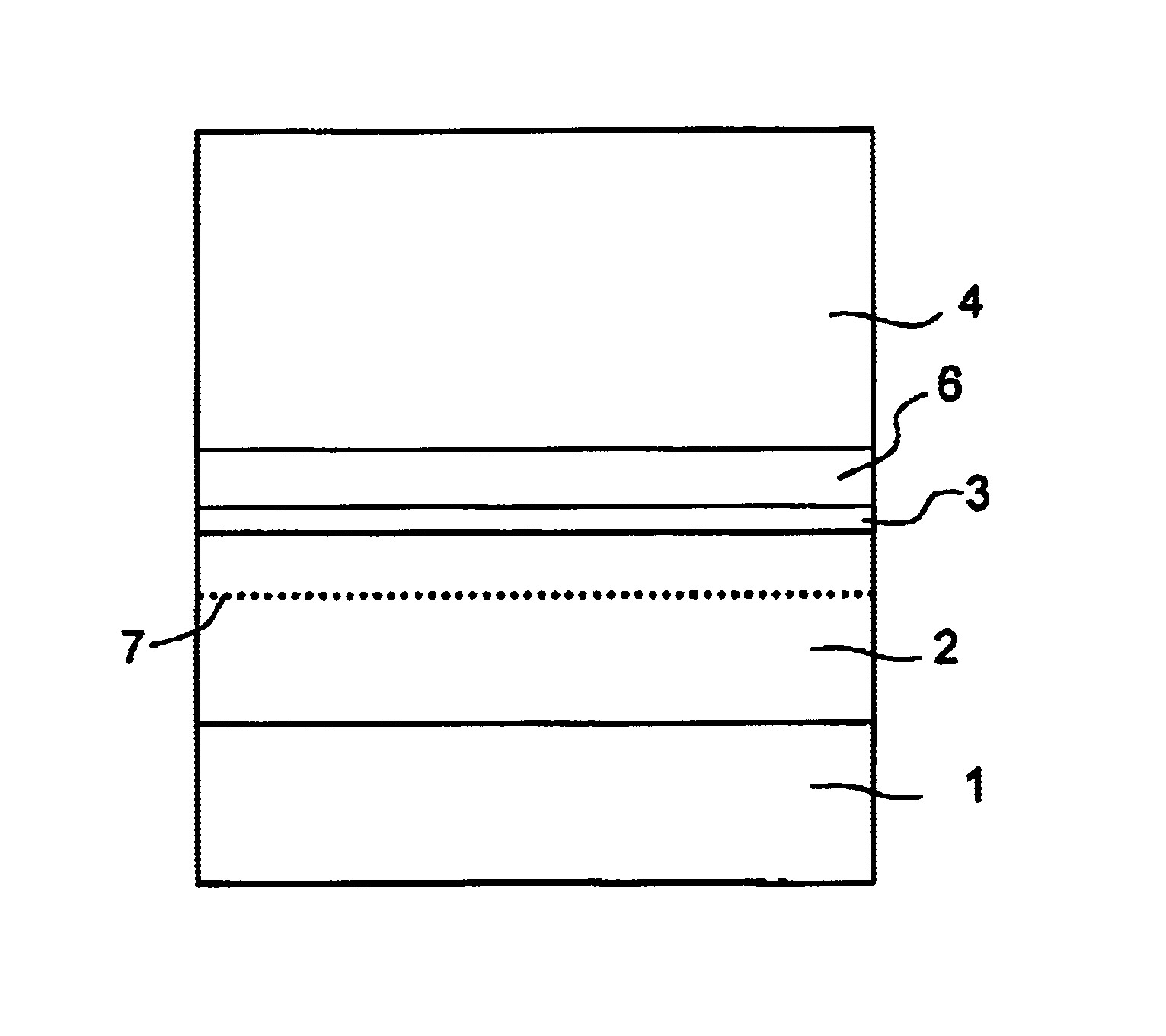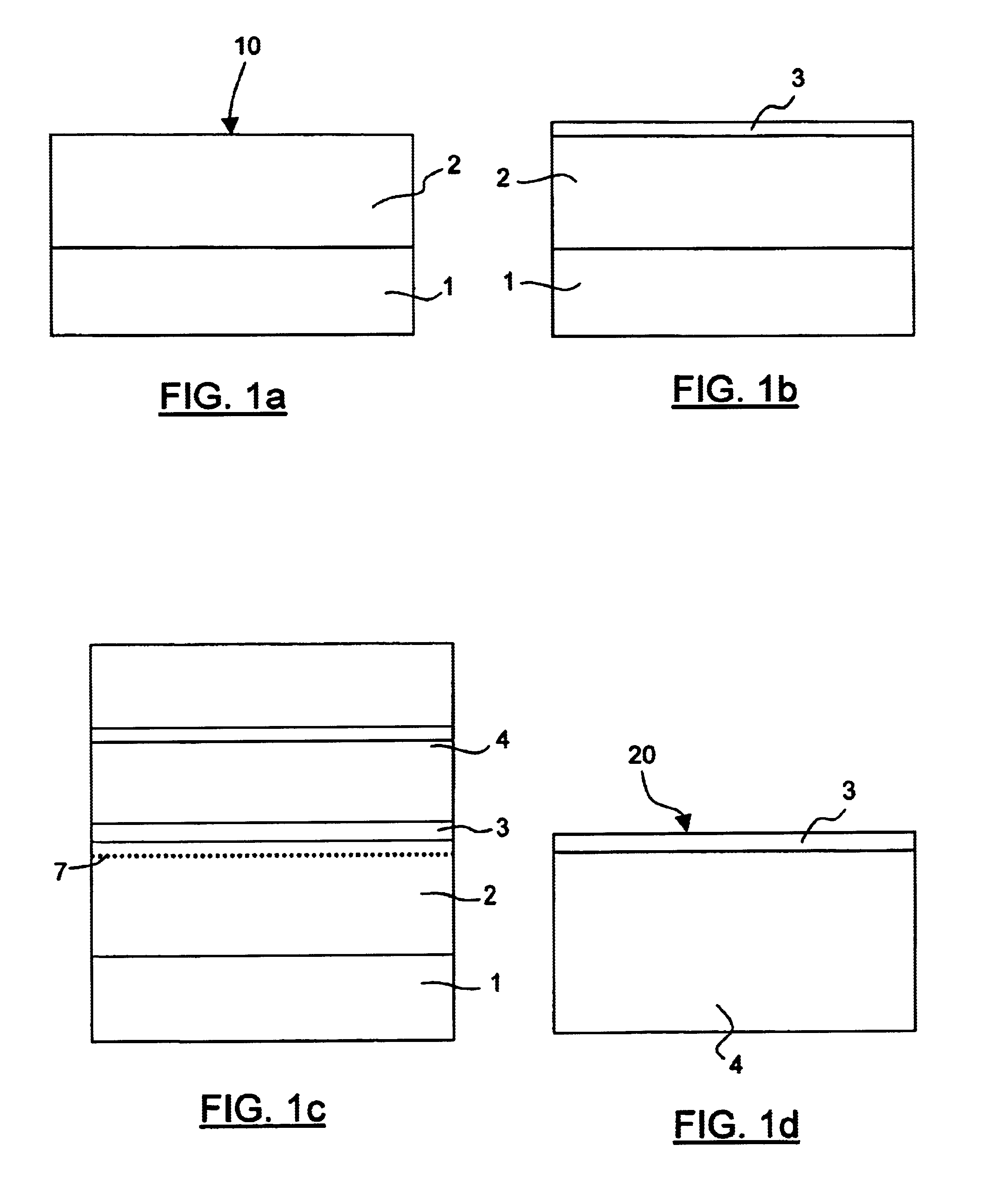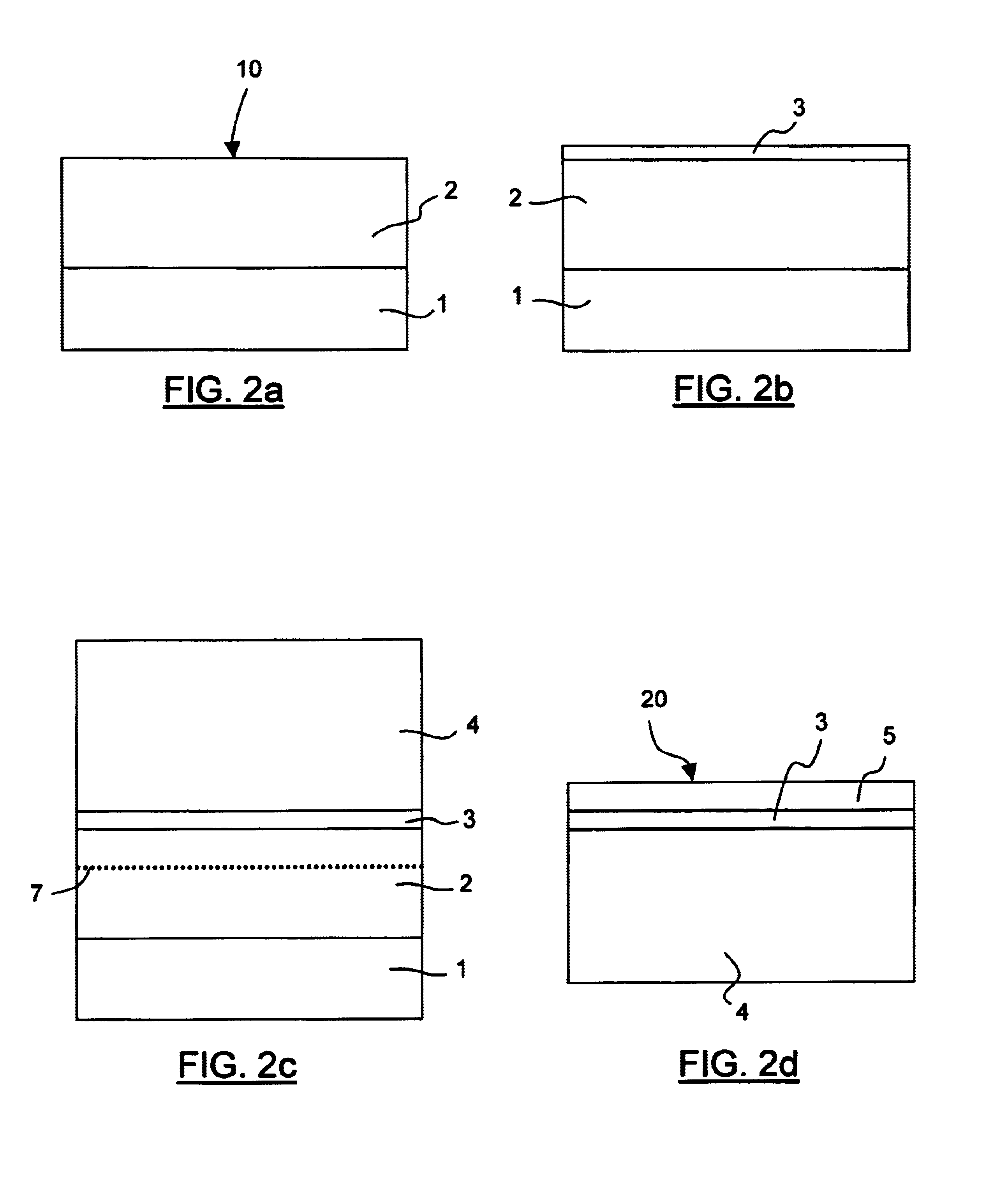Process for transferring a layer of strained semiconductor material
a technology of donor wafers and semiconductor materials, which is applied in the direction of semiconductor devices, basic electric elements, electrical apparatus, etc., can solve the problems of reducing the switching rate of electronic components to be produced or produced, reducing the technical performance of si/sige combinations, and especially its electrical properties, and reducing the risk of complex operation of electronic components in the active part of such a combination having two on-insulator layers
- Summary
- Abstract
- Description
- Claims
- Application Information
AI Technical Summary
Benefits of technology
Problems solved by technology
Method used
Image
Examples
Embodiment Construction
[0034]The expression “strained layer” is understood here to mean any layer of a semiconductor material with a crystallographic structure that is strained in tension or in compression during crystal growth, such as during epitaxy, with at least one lattice parameter that is substantially different from the nominal lattice parameter of this material. Conversely, the term “relaxed layer” means any layer of a semiconductor material which has an unstrained crystallographic structure. That is to say, one which has a lattice parameter substantially identical to the nominal lattice parameter of the material of the layer.
[0035]The invention aims to produce an SeOI structure. The strain exerted within the semiconductor material of the produced SeOI may in fact exhibit physical and / or electrical properties worthwhile exploiting. Thus, for example, a main benefit of tension-strained silicon layers (also called strained Si layers) consists mainly in the fact that the charge carriers (such as hol...
PUM
 Login to View More
Login to View More Abstract
Description
Claims
Application Information
 Login to View More
Login to View More - R&D
- Intellectual Property
- Life Sciences
- Materials
- Tech Scout
- Unparalleled Data Quality
- Higher Quality Content
- 60% Fewer Hallucinations
Browse by: Latest US Patents, China's latest patents, Technical Efficacy Thesaurus, Application Domain, Technology Topic, Popular Technical Reports.
© 2025 PatSnap. All rights reserved.Legal|Privacy policy|Modern Slavery Act Transparency Statement|Sitemap|About US| Contact US: help@patsnap.com



